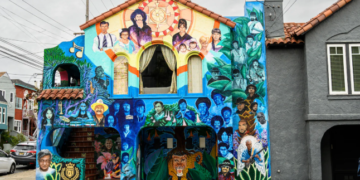April 2, 2025 Story by: Editor
The city’s long-anticipated housing and infrastructure study, released last week, revealed a shocking statistic: typical Black and Hispanic families can afford median-valued homes in less than 1% of Nashville neighborhoods.
Why it matters: The city’s pressing housing crisis, combined with a history of racist land-use policies, have left minority families on the outside looking in when it comes to buying a home.
Catch up quick: Last year, a group of Metro Council members, led by Councilmember Quin Evans Segall, pitched an ambitious plan to address Nashville’s middle-class housing problem.
- Evans Segall’s proposal would have opened up many Nashville neighborhoods to more density, potentially replacing single-family lots with quadruplexes. Several neighborhoods angrily opposed the plan, which eventually stalled out in the council.
- In response, Metro Council commissioned a comprehensive study about Nashville’s housing and infrastructure, focusing on what zoning policies the city could implement to address the issue.
- As part of that study, council asked the Planning Department to zero in on the issue of equity in housing.
Driving the news: The planning report, released Friday, laid bare the fact that in the vast majority of Nashville neighborhoods, families can’t afford to buy the median-valued home.
- The report examined home sales data, Metro Assessor’s Office data and Census Bureau statistics to come to its conclusions.
By the numbers: Black families can afford median-valued homes in 0.8% of Nashville’s 481 neighborhoods, while Hispanic families can afford homes in 0.6%.
- Comparatively, white families can afford median-valued homes in 31.9% of neighborhoods, and Asian families earn enough to afford homes in 29.8% of neighborhoods.
- The median home value countywide is about $470,000, according to Redfin.
Flashback: For decades, Black residents dealt with racist land use policies and red-lining by financial institutions, which diminished their ability to buy homes. City researchers discovered a 1933 Tennessean article, which described Nashville’s most dense neighborhoods as including “the housing in which Negroes live.”
- White families tended to live in less-dense neighborhoods with more single-family housing.
- What we’re saying to Black and Hispanic families is that in 99% of our neighborhoods, they can’t participate in the way middle class families generate wealth in America,” Evans Segall tells Axios.
- “We’re locking out massive swaths of the population from the stability that middle class families earn from their housing investments.”
- What’s next: The city’s report recommends a broad shift in codes regulations and zoning rules to allow more dense housing on Nashville’s busy transit corridors and their nearby streets.
- The city plans to engage the community to get feedback on zoning changes in those areas to allow more small-scale single-family and small-and-moderate scale multifamily developments.
- While the more controversial plan offered last year by Evans Segall would have allowed more density across the city, the new report suggests a more surgical approach that takes into account the transit plan approved by voters in November.
- It’s cheaper to add more density along the major transit corridors, like Gallatin Pike and Nolensville Road, because the infrastructure is less expensive to install.
Source: Axios















